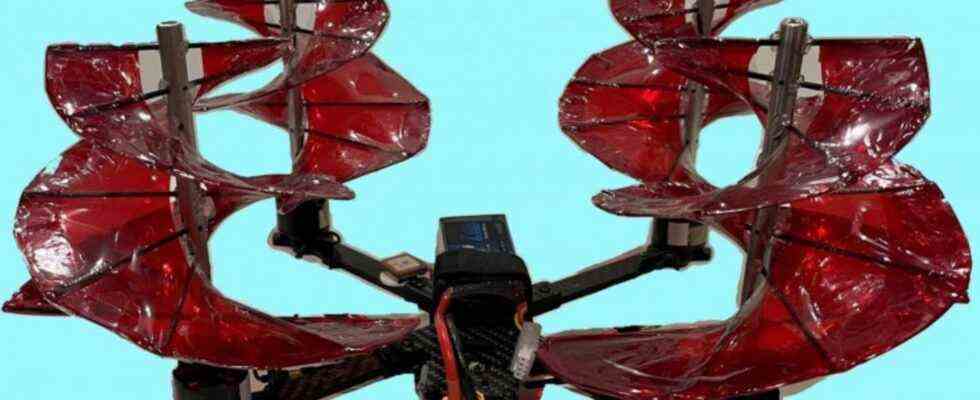study model
Flying like in the 15th century: This drone is based on plans by Leonardo da Vinci
The airworthy prototype uses a mixture of old and modern technology
© Austin Prete/University of Maryland
Hundreds of years before the first successful human flight, painter and inventor Leonardo da Vinci had already devised flying machines. One of the plans has now been put into action – as a working quadcopter.
His most famous work may be the Mona Lisa, but Leonardo da Vinci had a lot more to offer. His vast amount of scientific study of human anatomy and elaborate plans for inventions established him as a true universal genius. Now one of his ideas has been proven to be functional: the so-called “air screw”.
The principle was first described by da Vinci in manuscripts written between 1487 and 1490. The master called them “Helix Pteron”, which can also be translated as “spiral wing”. The principle was as simple as it was revolutionary: If you turn a spiral quickly, lift is created – which could theoretically lift it, as described by da Vinci. Today the concept is well known to us: It is the operating principle of the helicopter.
500th anniversary success
Now a group of students from the University of Maryland has successfully made it fly again, much closer to da Vinci’s original design. The occasion was a university competition organized jointly with the American Helicopter Association. Every year, a helicopter designed by the students themselves receives an award. To honor the 500th anniversary of da Vinci’s death in May 2019, it was necessary to develop a design that stayed very close to his original manuscripts.
The winning concept from Maryland, called “Elios”, translated the design into a modern approach: While da Vinci still wanted to use a single spiral as a drive, the students combined the idea with the more stable flight concept of a quadcopter – using four of the spirals at the same time one. In computer simulations, they were able to prove their ability to fly. And promptly won the prize.
Surprised designers
Almost 1.5 years later, a member of the group wanted to know exactly. And turned the design into reality as part of his master’s thesis. He and his team members were initially skeptical themselves, Austin Prete told “Cnet”. But then the drone with the spiral wings actually took off. “I was completely surprised that it worked,” Prete admitted to the tech site. Previously, he presented his building process and a video of the flying prototype at the 2022 Transformative Vertical Flight show last week.
Ultimately, however, the design was actually feasible mainly because Prete and his team were able to use other materials than da Vinci was able to. While his original design with leather, metal and wood was limited to the materials that were available at the time, but unfortunately also very heavy and dense, Prete was able to rely on light plastics.
Old idea, new possibilities
Implementation was also easier. Instead of always having to build new prototypes, he was able to simulate the aerodynamics on the computer, and many errors could thus be corrected before construction began. Da Vinci would probably never have dreamed that electric motors and batteries could easily be found in stores these days.
The inventor must have been proud anyway. Despite all the progress, the experiment ultimately proved one thing above all: the 500-year-old idea also works in practice. She was just way ahead of her time.
Sources: cnet, conference page



